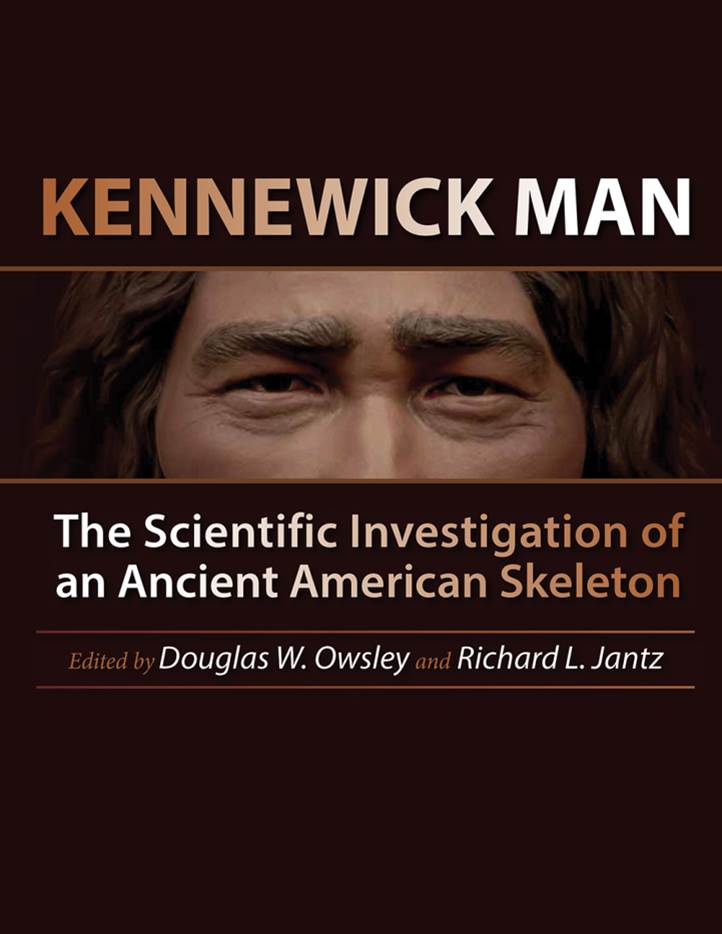 Kennewick Man, or the Ancient One as he is known to many American Indians, is the most famous (or infamous), if not the most ancient, set of human remains from North America. A new book just published by Texas A&M University Press presents the results of the latest scientific research on this man who lived and died in the Pacific Northwest around 9,000 years ago. An article by Douglas Preston on Smithsonian.com summarizes our new understanding of “the most important human skeleton ever found in North America” and provides context for the almost two decades of controversy that followed his discovery. According to the TAMU Press webpage — “This volume represents a collaboration among physical and forensic anthropologists, archaeologists, geologists, and geochemists, among others, and presents the results of the scientific study of this remarkable find. Scholars address a range of topics, from basic aspects of osteological analysis to advanced research focused on Kennewick Mans origins and his relationships to other populations. Interdisciplinary studies, comprehensive data collection and preservation, and applications of technology are all critical to telling Kennewick Mans story.” I contributed a chapter to the book in which I review the evidence for the earliest human remains from across North America. My goal was to provide a context for understanding what life was like for Kennewick Man and the other ancient ones whose stories have been recovered through archaeology and the related discipline of biological anthropology. The title of my chapter is “The People Who Peopled America.” Here are a couple of quotes from the chapter: “The accidental discovery in 1996 of Kennewick Man represented an opportunity to learn from the physical remains of a man who, while not in the vanguard of exploration, still is among the most ancient human remains yet discovered in America. The extraordinary completeness of the skeleton and the high degree of physical and chemical preservation make this discovery exceptional and one of the most potentially informative sets of human remains ever recovered in North America. The information presented in this volume adds immeasurably to our understanding of the life and times of a remarkable man. The fact that many results reported herein are markedly different from those obtained in previous analyses demonstrates how vital it is that human remains be available for re-examination by other scholars with ever-improving methods.” As Preston noted in the conclusion of his Smithsonian article: “Todays scientists still have questions for this skeleton, and future scientists will no doubt have new ones. Kennewick Man has more to tell.” Brad Lepper
Kennewick Man, or the Ancient One as he is known to many American Indians, is the most famous (or infamous), if not the most ancient, set of human remains from North America. A new book just published by Texas A&M University Press presents the results of the latest scientific research on this man who lived and died in the Pacific Northwest around 9,000 years ago. An article by Douglas Preston on Smithsonian.com summarizes our new understanding of “the most important human skeleton ever found in North America” and provides context for the almost two decades of controversy that followed his discovery. According to the TAMU Press webpage — “This volume represents a collaboration among physical and forensic anthropologists, archaeologists, geologists, and geochemists, among others, and presents the results of the scientific study of this remarkable find. Scholars address a range of topics, from basic aspects of osteological analysis to advanced research focused on Kennewick Mans origins and his relationships to other populations. Interdisciplinary studies, comprehensive data collection and preservation, and applications of technology are all critical to telling Kennewick Mans story.” I contributed a chapter to the book in which I review the evidence for the earliest human remains from across North America. My goal was to provide a context for understanding what life was like for Kennewick Man and the other ancient ones whose stories have been recovered through archaeology and the related discipline of biological anthropology. The title of my chapter is “The People Who Peopled America.” Here are a couple of quotes from the chapter: “The accidental discovery in 1996 of Kennewick Man represented an opportunity to learn from the physical remains of a man who, while not in the vanguard of exploration, still is among the most ancient human remains yet discovered in America. The extraordinary completeness of the skeleton and the high degree of physical and chemical preservation make this discovery exceptional and one of the most potentially informative sets of human remains ever recovered in North America. The information presented in this volume adds immeasurably to our understanding of the life and times of a remarkable man. The fact that many results reported herein are markedly different from those obtained in previous analyses demonstrates how vital it is that human remains be available for re-examination by other scholars with ever-improving methods.” As Preston noted in the conclusion of his Smithsonian article: “Todays scientists still have questions for this skeleton, and future scientists will no doubt have new ones. Kennewick Man has more to tell.” Brad Lepper